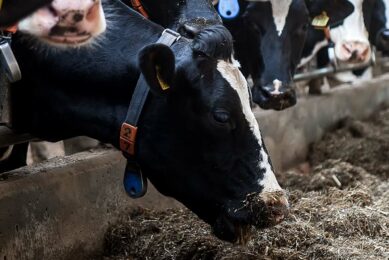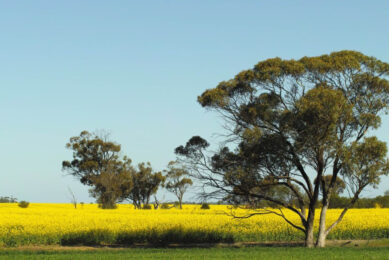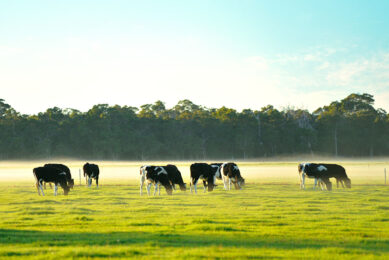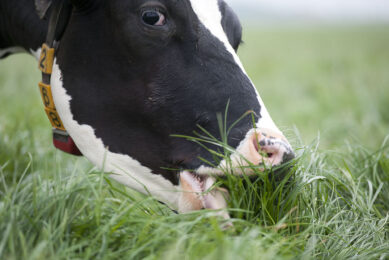Pasture bloat in dairy cows
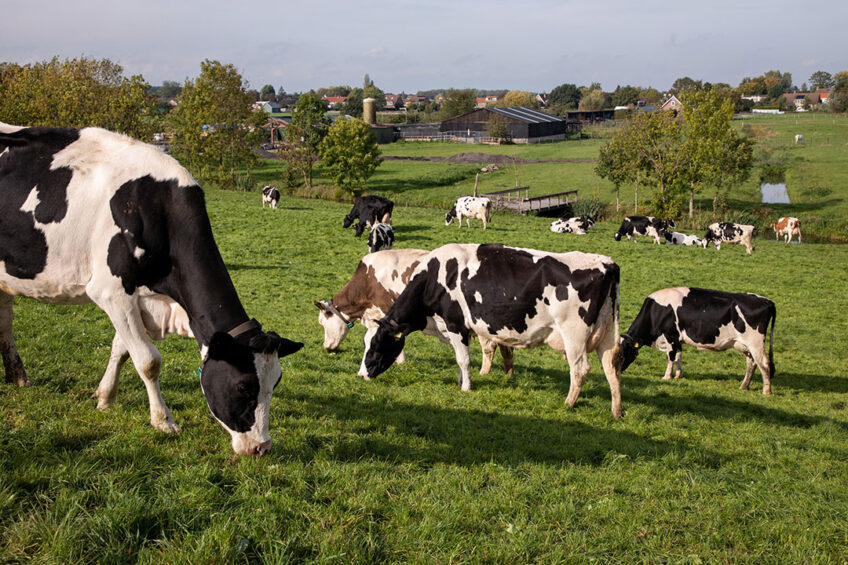
Bloat in dairy cows has become more common among cattle and is now a matter of serious economic importance in the dairy industry. The following is a discussion of its causes, economic losses attributed to it, and control strategies, with particular reference to grazing management.
Bloat is a condition of tympanites occurring in ruminant animals. There are 2 types of bloat that have been identified, namely free-gas bloat and frothy bloat, with the latter representing about 90% of the total bloat cases occurring worldwide.
Incidence and economic significance
With the increased use of legumes, bloat has become more common. A recent estimate has placed the annual economic loss from bloat in the US in excess of US$ 100 million, with a calculated death loss of more than 0.5% of the cattle population. Similarly, the financial loss to the dairy cattle industry in New Zealand has been put at NZ$ 5 million annually with a death rate of 1-2% in dairy cows. Death losses of animals in Canada were about 0.5%, with one-half to two-thirds of these attributed to bloat.
Animal factors
It is often claimed that tropical breeds of cattle are less susceptible to bloat than temperate breeds. Within the same breed, the occurrence of bloat may vary depending on the following factors:
- Older animals have a higher bloat potential than young animals because of their higher capacity to consume bloat-causing legumes.
- Animals with a higher rate of saliva production are less prone to bloat due to the higher mucin yield which acts as an anti-frothing agent.
- Animals that have been previously exposed to bloat have a higher concentration of chlorophyll and higher gas production per litre of rumen fluid compared to those that did not bloat.
Physiological factors
The average cow’s rumen has a capacity of about 132 litres (35 gallons), and fermentation within it gives rise to bubbles of gas. This composes carbon dioxide (800 litres) and methane (500 litres). Some of this gas escapes via the bloodstream to the lungs and is breathed out, but leaves a great amount that can be expelled only by belching. If something makes belching impossible, then gas pressure builds up and is exerted on the diaphragm, heart, and lungs so that the cow becomes ill with bloat, is barely able to breathe, and is in considerable distress. Important factors that lead to the cow’s inability to belch are a physical obstruction of the esophagus, paralysis of the muscular wall of the rumen, and frothing of the rumen contents.
Table 1 – Bloat causing and bloat-safe legumes species
Plant factors
In pasture plants, several plant constituents may either increase or decrease the incidence of bloat, thereby making the plant either bloat-causing or bloat-safe (Table 1). The following is a brief description of these constituents:
1. Soluble protein: This is the predominant constituent representing about 60-65% of the legume froth and is classified into fraction-I and fraction-II. Fraction-I protein is an enzyme called ribulose diphosphate carboxylase with a large molecular weight of 550,000 and represents 5% of the total protein of alfalfa, red clover, and white clover, and hence makes these species of legumes bloat-causing due to the viscous structure of the fraction-I protein. Fraction-II protein, on the other hand, has a low molecular weight of 10,000 with low viscosity and is the major constituent of protein in the bloat-safe legumes, thereby making them less hazardous in terms of the occurrence of bloat.
2. Saponins: These plant factors have pharmacological effects on rumen motility and passage of feed, thereby allowing excessive fermentation. They may also contribute to bloat through the production of slime (a thick and slippery liquid substance) which forms froth.
3. Pectins: These substances may contribute to the incidence of bloat through the release of carbon dioxide in the process of converting pectic acid to bicarbonate.
4. Tannins: In bloat-safe legumes, there are considerable amounts of tannins (organic substances consisting of derivatives of gallic acid). They are present in some galls, barks, and other plant tissues, and make soluble protein insoluble.
5. Lipids: There is an increased level of lipid in bloat-safe plants compared to the bloat-causing ones (e.g. 1.5% in alfalfa versus 10.6% in Birdsfoot trefoil), which helps reduce enteric methane emissions by 10-25%. Lipids also act on breaking the froth when formed and release free gas.
Control measures for bloat in dairy cows
The following are beneficial tips for reducing the incidence of bloat, especially in old cows and those having physiological problems, or in cases of grazing pastures with bloat-causing plants:
- The use of grass and legume mixtures rather than the legume alone helps reduce the bloat potential. Hay feeding can also help reduce bloat. Research has shown that feeding orchardgrass hay before feeding alfalfa reduced the frequency of bloat by more than 90%.
- Wet pasture seems to increase frothy bloat at turn-in, so the moisture should be allowed to burn off first.
- The soluble protein content of alfalfa is highest at early growth stages and decreases as the plant matures. Alfalfa should, therefore, be allowed to reach maturity by being in at least 25% blossom before grazing.
- A pasture should not be clipped immediately before turning cattle out onto it, especially with a pasture high in white clover. Once the taller grass is removed, the short, highly palatable white clover, which has a high potential to cause bloat, can then be easily grazed by cattle.
- Strip grazing is beneficial since animals are confined to a small area and hence would be less selective, i.e., would graze both leaves and stems and would also have easy access to supplement.
- The use of ionophores such as monensin helps reduce the bloat potential by up to 70%. This is due to its effect on protozoa which engulf lipids and prevent their role in breaking down the froth and releasing free gases.
- The long-term solution to the problem of bloat would seem to lie in programmes of plant breeding designed to select legume species and cultivars of low bloating potential but adequate nutritional quality, and of animal selection with a low hereditary susceptibility to the disease. Some progress in this direction has been made.
References are available upon request.



